
Classes Still Create Hoosier Hysteria
July 27, 2017
By Rob Kaminski
MHSAA benchmarks editor
This is the fourth part in a series on MHSAA tournament classification, past and present, that will be published over the next two weeks. This series originally ran in this spring's edition of MHSAA benchmarks.
Twenty years ago, Bloomington North High School won the Indiana High School Athletic Association boys basketball championship, defeating Delta 75-54 at the RCA Dome in Indianapolis.
The date, March 22, 1997, is at the same time revered and disdained by traditionalists in the state who saw it as the last schoolboy championship game the state would ever host.
That’s how devout the game of basketball, particularly interscholastic basketball, had become in the Hoosier state during the 87 years a state champion – one state champion, to be precise – was crowned.
Following that 1997 season, the IHSAA moved to a four-class system for its roundball tournaments, like so many of its state association counterparts had done years earlier.
It would be shocking to find more than a small percentage of current high school basketball players around the country unfamiliar with the iconic movie Hoosiers, even though the film is now more than 30 years old.
And, the storyline for that blockbuster unfolded more than 30 years prior to its release, when small-town, undermanned Milan High School defeated Muncie Central High School 32-30 in the 1954 IHSAA title game.
Perhaps it’s because of the David vs Goliath notion, or the fame of the movie that replaced Milan with the fictional Hickory and real-life star Bobby Plump with Hollywood hero Jimmy Chitwood, or the simple fact that Indiana had something other states didn’t.
Whatever the reason, plenty of opposition remains to this day to basketball classification in the state.
The fact is, the small rural schools were regularly being beaten handily by the much larger suburban and city schools as the tournament progressed each season.
Small schools also were closing at a rapid rate following the state’s School Reorganization Act in 1959, as students converged on larger, centralized county schools. From 1960 to 2000, the number of schools entering the tournament dropped from 694 to 381, and in 1997 a total of 382 schools and 4,584 athletes began competition at the Sectional level (the first level of the IHSAA Basketball Tournament).
It was at the entry level of the tournament where school administrators felt the pain of the new class system, but not necessarily for the same nostalgic reasons as the fans who either attended or boycotted the tournament.
At the Sectional round of the tournament, the IHSAA was culling just 2 percent of the revenue, with the participating schools splitting the balance. So, when Sectional attendance dropped by 14 percent in that first year of class basketball, many schools realized a financial loss. It was money they had grown to count on in prior years to help fund various aspects of the department.
Schools cumulatively received more than $900,000 from Sectional competition in 1998, but that total was down from more than $1 million in the last year of the single-class tournament.
Yet, the current format provides a great deal more opportunity and realistic chances at championship runs for schools of all enrollments.
To date, 60 additional teams have championship or runner-up trophies on display in school trophy cases around Indiana.
That was the mission in front of then-IHSAA commissioner Bob Gardner (now National Federation executive director) once the board made its decision: to give thousands more student-athletes the opportunity for once-in-a-lifetime experiences.
As any statistician knows, figures can be manipulated to tell any side of a story. Declining attendance in year one of class basketball is such a number.
The truth is tournament attendance had been on a steady downward spiral since its peak of just over 1.5 million in 1962. By the last single-class event in 1997, the total attendance was half that.
The challenge then and today, as it is for all state associations, is to find that delicate balance for those holding onto tradition, those holding onto trophies, and the number of trophies to hand out.
Editor’s Note: Stories from the Fort Wayne Journal Gazette in 1998 and from a 2007 issue of Indianapolis Monthly provided facts in this article.
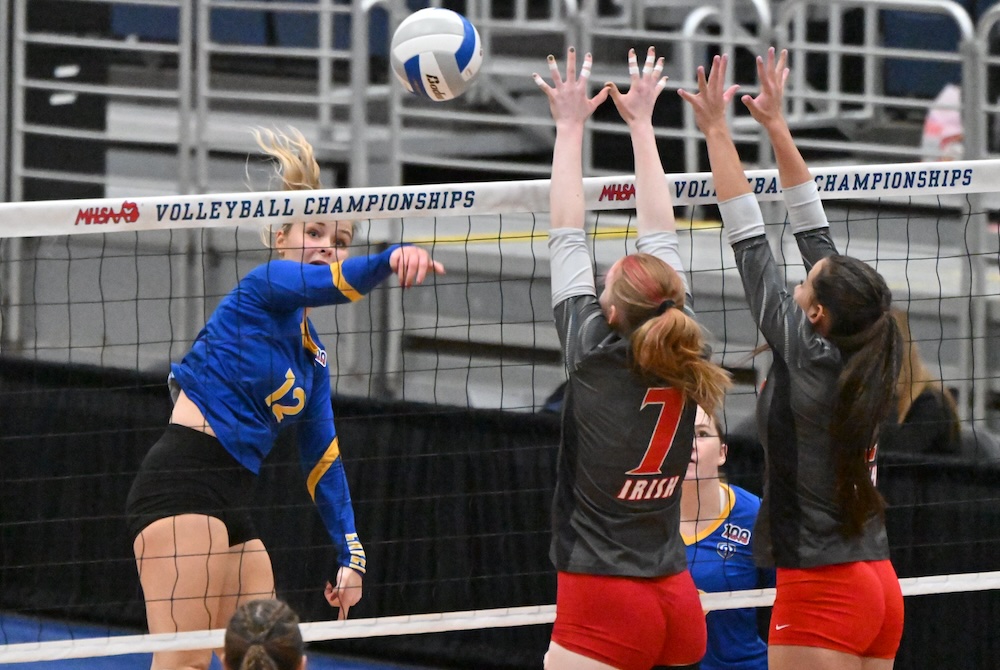
Story in Photos: 2024 Volleyball Division 1 & 4 Semifinals
By
Geoff Kimmerly
MHSAA.com senior editor
November 21, 2024
BATTLE CREEK – The matchups for this season’s Division 1 and 4 Volleyball Finals are set after Thursday’s Semifinals at Kellogg Arena, with the possibility of first-time champions in both divisions, a reigning champion playing to repeat in near-perfect fashion and a past champion pursuing its first title in more than a decade.
Saturday’s first two Finals will see the following face off at Kellogg Arena:
10 a.m. – Division 4 – Clarkston Everest Collegiate (37-0-1) vs. St. Joseph Our Lady of the Lake Catholic (33-3-1)
Noon – Division 1 – Northville (40-2) vs. Rockford (40-9)
Everest is the reigning champion in Division 4 and attempting to become the first Finals winner to also finish undefeated since 2015. The Mountaineers face Our Lady, which will play in its first championship match.
Northville is seeking its first Finals title as well, and finished runner-up in 2022. Rockford is seeking its second championship, to go with its Class A title won in 2011.
Division 2 and 3 Semifinals will be played Friday. Click here for more.
Hockey Weekly Action Photos captured the following from Thursday’s action.
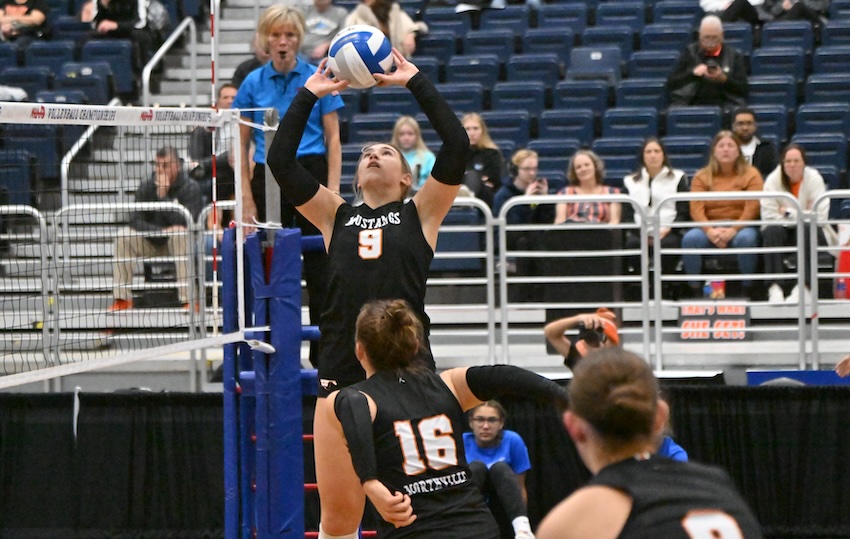
Northville’s Ella Craggs (9) sets for Elle Chenowith (16) during their team’s 25-20, 20-25, 25-19, 25-22 Division 1 Semifinal win over Bloomfield Hills Marian (45-8).
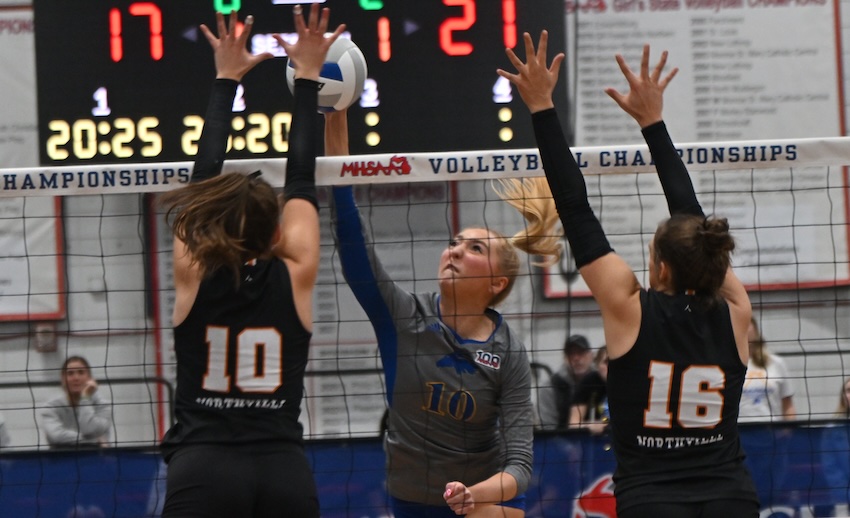
Marian’s Jayla Zayti works to get a ball past Northville’s Mallory Reck (10) and Chenowith (16). Zayti finished with six kills and seven blocks, while Reck had 18 kills and four blocks, and Chenowith had three blocks.
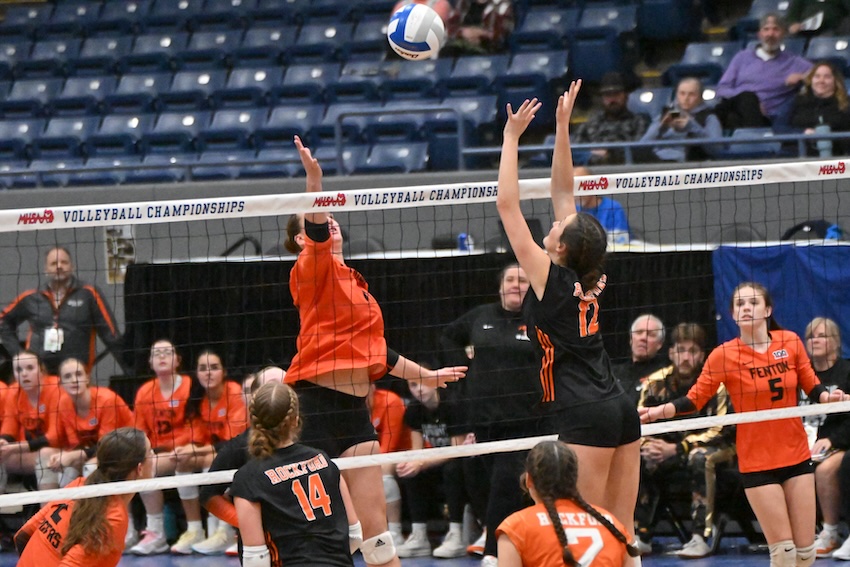
A Fenton player and Rockford's Grace Crelly (12) meet at the net of the second Division 1 Semifinal. Crelly finished with five kills in the Rams’ 25-12, 25-14, 25-8 victory.
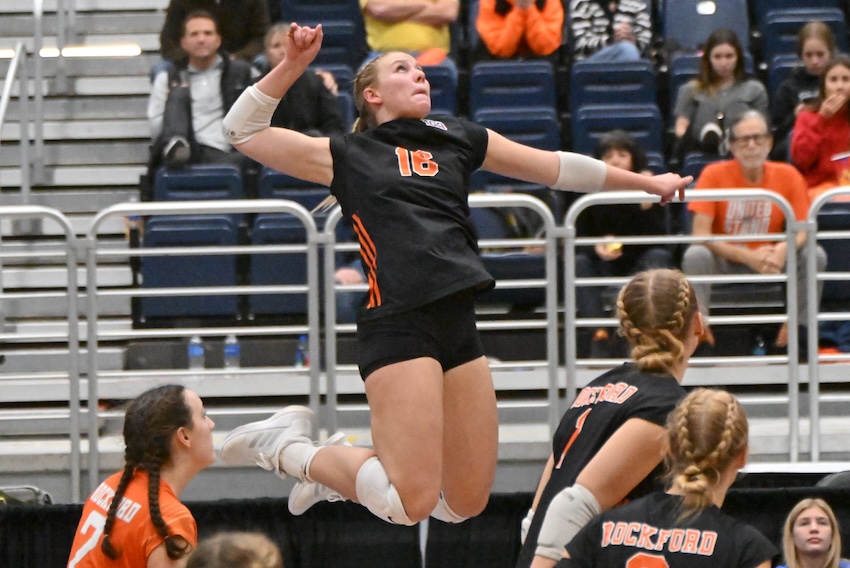
The Rams' Mallory Wandel (16) elevates for a kill attempt against the Tigers (36-5). Wandel finished with 18 kills.
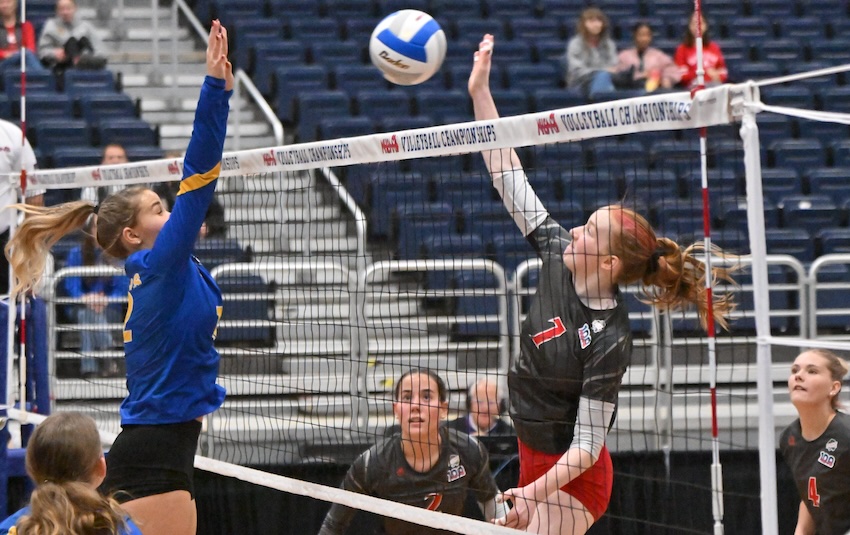
Mount Pleasant Sacred Heart’s Erin Judge (7) sends a kill attempt toward the Our Lady of the Lake side of the court. Judge finished with 13 kills, but the Lakers prevailed 24-26, 25-22, 26-11, 26-28, 15-8. The Irish finished 42-5-2 this fall.

Clarkston Everest Collegiate’s Emmerson Phyle (5) serves during her team’s 25-10, 25-16, 25-13 sweep of Hancock to open the Division 4 Semifinals on Thursday. Phyle had a pair of aces during the match.
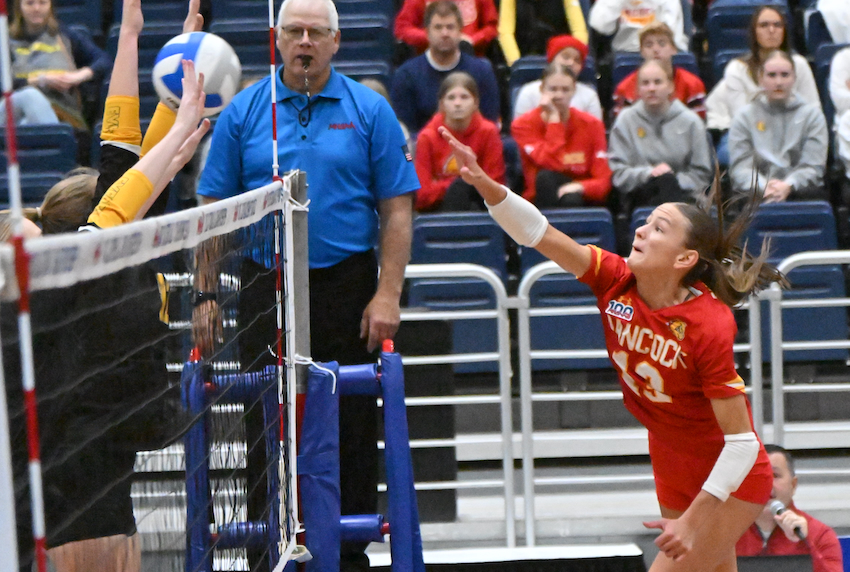
Hancock’s Brooke Koskela (13) puts a ball through an Everest block. Koskela finished with 10 kills for the Gremlins (25-7-2).
TOP PHOTO Our Lady of the Lake’s Nora Proos sends a spike into the block of Judge and another teammate Thursday.

